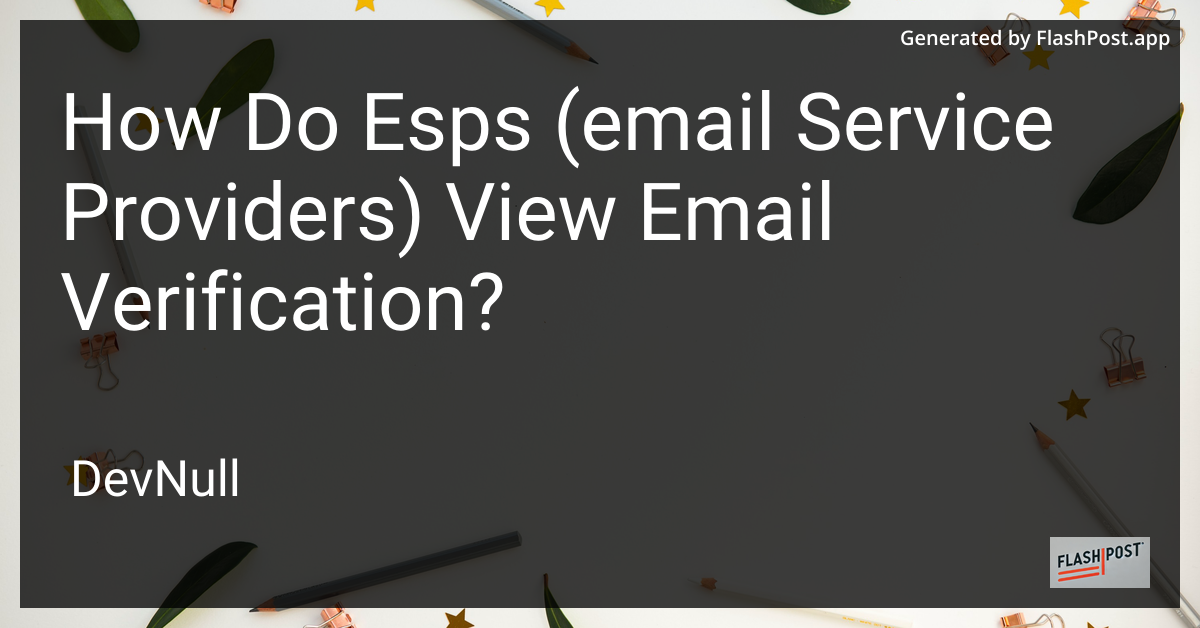

How Do Esps (email Service Providers) View Email Verification?
In the realm of email marketing, ensuring that your emails reach the intended recipients is of paramount importance. One of the key factors influencing email deliverability is how Email Service Providers (ESPs) perceive your ongoing email verification efforts. Let’s dive deep into the significance of email verification and how ESPs view this crucial aspect of email marketing.
What is Email Verification?
Email verification is the process of scrutinizing an email address to ensure it’s valid, active, and owned by a real person. This proactive measure prevents marketers from sending emails to invalid addresses, thus reducing bounce rates and enhancing sender reputation. A robust email verification system checks the syntax of an email address, domain validity, and, ultimately, the existence of the mailbox where the email is supposed to land.
Why is Email Verification Important?
-
Reduced Bounce Rates: High bounce rates can flag your email campaigns as suspicious. Verifying emails before sending them ensures only valid addresses are targeted, thus keeping bounce rates to a minimum.
-
Improved Sender Reputation: ESPs view high bounce rates as a negative signal. By maintaining a clean email list, your sender reputation improves, increasing the chances of your emails reaching the inbox.
-
Enhanced Deliverability: Deliverability is optimized when emails are sent to verified, legitimate email addresses. This helps in achieving better open and engagement rates.
-
Cost Efficiency: Many ESPs charge based on volume. By verifying your email list, you eliminate unnecessary costs associated with sending to invalid addresses.
How Do ESPs View Email Verification?
ESPs hold email verification in high regard as it signals responsible sending practices. Here’s how ESPs generally view email verification:
-
Trustworthy Practices: ESPs categorize your domain as trustworthy if you consistently practice email verification. This trust level can positively impact the primary inbox placement of your emails.
-
Higher Engagement Metrics: By interacting with verified and engaged users, ESPs detect better engagement rates like opens, clicks, and conversions. This boosts the overall score of your sending IP.
-
Compliance with Standards: ESPs often set guidelines demanding adherence to verification and permission-based emailing. Meeting these standards aligns with their efforts to curb spam and ensures you stay within accepted policy boundaries.
Implementing Email Verification in Your Workflow
Implementing an email verification system can be simple and seamless with the right tools and strategies:
-
Use of Verification Tools: Several online tools can automatically verify emails in bulk, integrating with your CRM to update your lists in real-time.
-
Regular List Hygiene: Regularly cleaning your email list ensures ongoing deliverability. Schedule routine checks to weed out invalid addresses.
-
Verification on Sign-up: Implement real-time verification during sign-ups to catch typos and fake emails immediately.
Further Reading
For those interested in exploring more about setting up and sending emails using various programming frameworks, you may find the following articles useful:
-
Discover comprehensive steps for configuring and sending SMTP emails using a Perl Email Script.
-
Learn how to configure email settings in SonarQube for effective notifications by following Email Settings SonarQube.
-
If you are working with CakePHP and need to set up email functionalities, this guide on Email Sending in CakePHP will be incredibly helpful.
In conclusion, adopting email verification not only strengthens the integrity of your email marketing efforts but also aligns with the standards set by ESPs, ensuring a healthy, thriving email outreach strategy.
This markdown-formatted article is structured to be SEO-friendly, using relevant keywords and links strategically placed to provide further reader engagement and resource expansion.